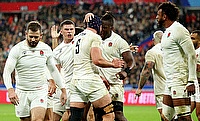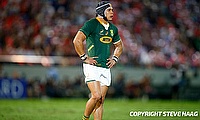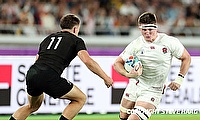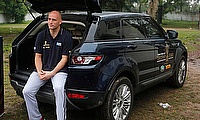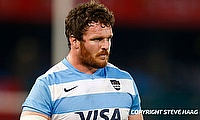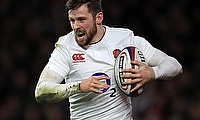Is Farrell the new Wilkinson?

It is an inevitable truth that every new English fly half will ultimately be compared to Jonny Wilkinson in one way or another and this was no different with the emergence of Owen Farrell on the international scene. Farrell made his first five appearances for England in this years' Six Nations and already the comparisons between himself and the world cup winner have been coming thick and fast.
His progress is all the more remarkable when you consider that last season he was sent out on loan to gain experience with the Bedford Blues and that he didn't even take up the game of rugby union until six years ago when his father made the switch from rugby league to union. His rise to stardom has been fairly mercurial and if you cast your mind back six months, Farrell wouldn't have even been mentioned in the context of the England team, let alone comparison to Wilkinson himself. Arguably it has been the retirement of Wilkinson which has helped throw Farrell into the limelight, with only Toby Flood and Charlie Hodgson seemingly considered as alternates.
Farrell's introduction to the England team, at inside centre, went well, with the youngster distributing the ball well and assuming the kicking duties with ease. This was not too dissimilar to Wilkinson who made his debut for England on the wing, with both players allowed to overcome any anxieties they had about taking the step up without the pressure of being thrust into the fly half position.
Farrell went on to play in all five of England's game this Six Nations, amassing 63 points in all. His kicking was accurate and reliable throughout even if he seemed to struggle somewhat when kicking from around 50 metres out. Whilst the modern game prizes kickers who can consistently convert kicks from this kind of range, it is certainly not the most important asset of any fly half. The ability to withstand pressure and maintain their cool however is a critical component of any international fly half and Farrell seems to have these attributes in abundance.
While Wilkinson was never famed for his ability as a playmaker who could spark a backline, his passing and distribution skills were good if not spectacular. If anything, Farrell has shown that he perhaps slightly more competent at these tasks than Wilkinson was at his age, although much of this could be attributed to England's desire to play a more expansive game than they did during the early part of Wilkinson's tenure.
The biggest compliment you can pay Farrell however is to compare his defence to that of the former fly half. Wilkinson was as equally famous for his unerring accuracy with the boot as he was for his uncompromising defence. You would often see the relatively small framed Wilkinson taking on men much bigger than himself and come out on top in the tackle. Much the same can be said of Farrell who put in several Wilkinson-esque tackles over the course of the Six Nations and rarely looked out of his depth against the physical, ball carrying presences of the French and Welsh midfields. The fly half channel is often exploited in international rugby and attacked by the likes of Jamie Roberts and Wesley Fofana, making defensively proficient fly halves such as Farrell highly prized.
Farrell has certainly shown that he is capable of being an international fly half and the maturity he has shown is certainly a credit to his fathers' tutelage at both Saracens and England. He has taken to the role seamlessly, playing like a seasoned veteran in what is a young and inexperienced England side. Comparisons to Wilkinson, although understandable, are perhaps somewhat premature and the youngster needs to replicate this level of performance on both club and international level. Farrell should feature for England this summer barring injury and if he can continue to impress against Southern Hemisphere opposition, then comparisons may no longer be premature.


